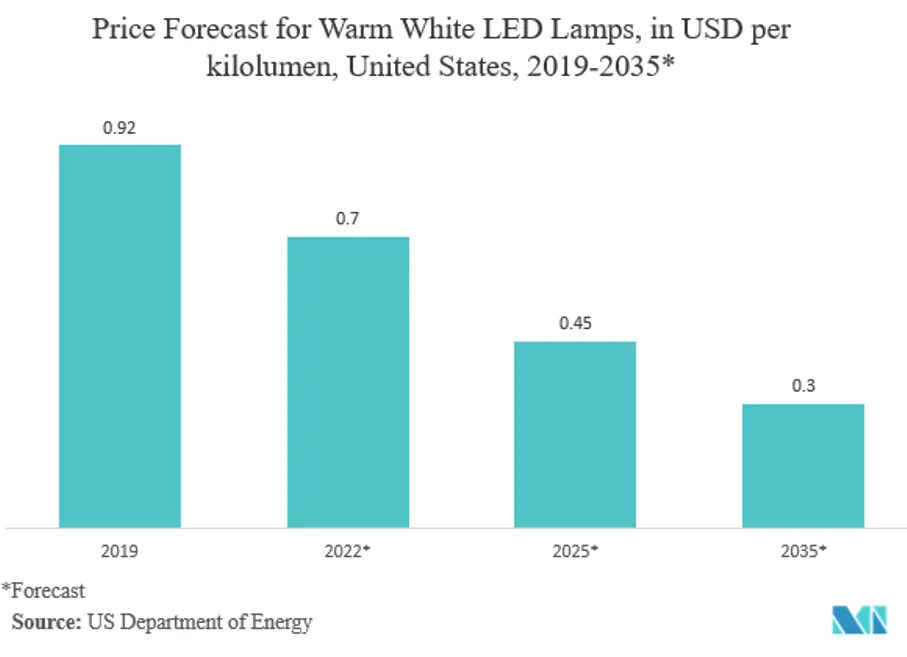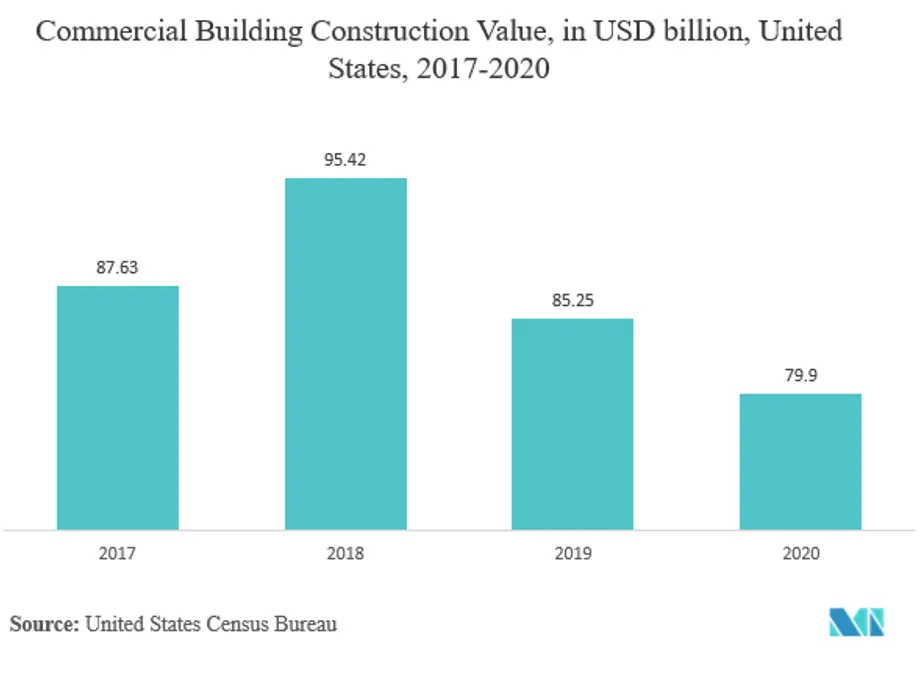Market Trends of United States Emergency Lighting Industry
This section covers the major market trends shaping the US Emergency Lighting Market according to our research experts:
Development of Connected Systems and Internet of Things (IoT) and Declining Prices of LED to Drive the Market
- The development of connected systems and the Internet of Things (IoT), a central management console integrated into the system architecture, offers the customers control, the ability to monitor facilities, and apply remediation services, thus actively affecting the emergency lighting market.
- Despite the user-friendly self-testing feature, the task remains prone to human error to visually detect the emergency lighting system in a large commercial building. IoT technology is applied to simplify the maintenance and inspection of modern emergency lighting systems in such applications.
- It is done via wire-connection or wireless technology, with the prerequisite of adding network connectivity to the emergency lighting system. And the resultant is a connected emergency lighting system for remote monitoring and self-test. The concept development was done 20 years back, but the market was not ready due to cost and technology complexity. The growing and gradual acceptance of smart building and fully integrated building management systems has brought the connected emergency lighting concept back in the last three years.
- As LEDs in an industrial environment deliver savings up to 70%, the concerned emergency lights become highly controllable. Additionally, the integration of LEDs with the security industry is growing. LED luminaires are more efficient and simplify emergency lighting testing with indicators to display red or green solid or flashing LEDs for system readiness. These are required by standards such as CSA C22.2 NO. 141 in North America.
- Development of specialty LED drivers and control modules offer additional programmability to connected emergency lighting and building systems such as remote maintenance and monitoring, dimming, power metering, data collection, commissioning, to name a few. With more building owners contracting for LED retrofits to save energy, retrofitting with smart LED luminaires with on-board wireless communications is a cost-effective approach.

Commercial Sector to Dominate Market Share
- The COVID-19 pandemic negatively impacted the construction of commercial buildings in 2020. However, the industry is expected to bounce back in line with the rapid vaccination drive in the coming years.
- According to the National Fire Protection Association's (NPFA) Life Safety Code 101, all commercial buildings in the country must have emergency and exit path lighting. Every three years, the code is updated to ensure new and existing facilities offer protection from fire and other related hazards for occupants.
- In addition, when it comes to brightness levels, the commercial emergency lights must not fall below 6.5 lux at any point of time during the hour and a half mark. Furthermore, the uniformity ratio must not go above 40:1. The lighting system must have a power supply either from a generator or battery backup. Such regulations mold the requirements of emergency lights for office buildings, restaurants, retail stores, and other commercial buildings.
- According to the Department of Energy (DOE), the average number of kilowatt-hours per square foot for a commercial building is approximately 22.5 kWh/square foot. Out of the total consumption, the lighting solely accounts for roughly 7kWh/square foot, which is the second-highest post refrigeration and equipment (8kWh/square foot). The high level of energy consumption by commercial lighting is developing a need for energy-efficient commercial emergency lights.


